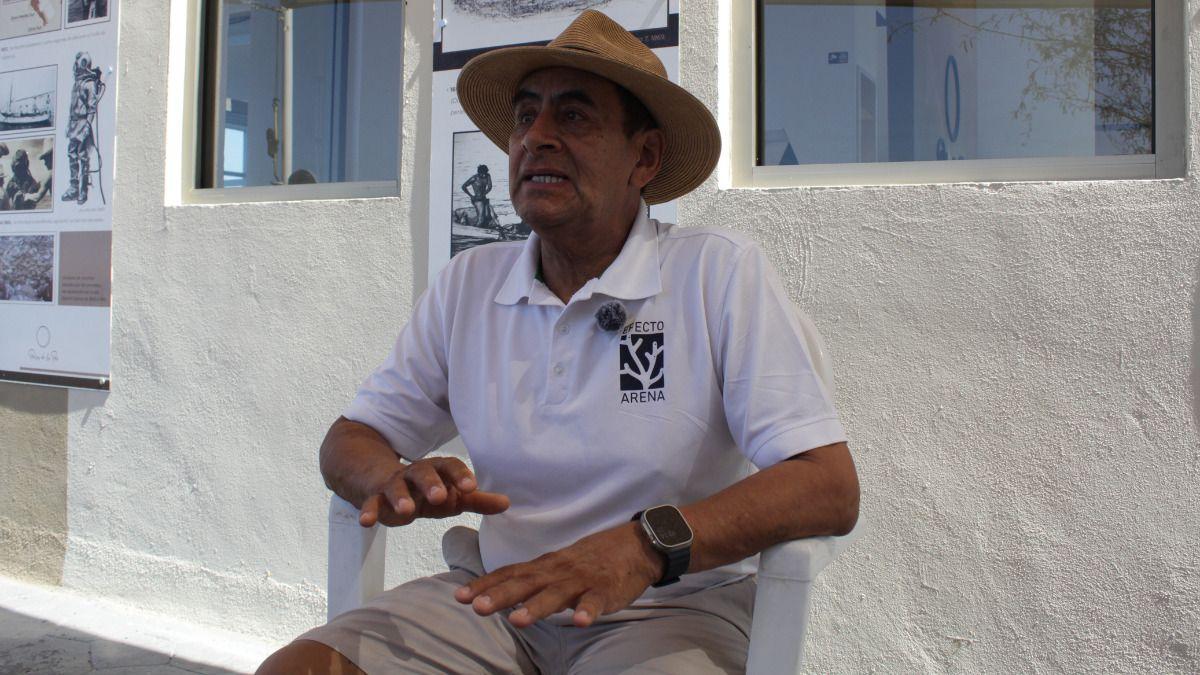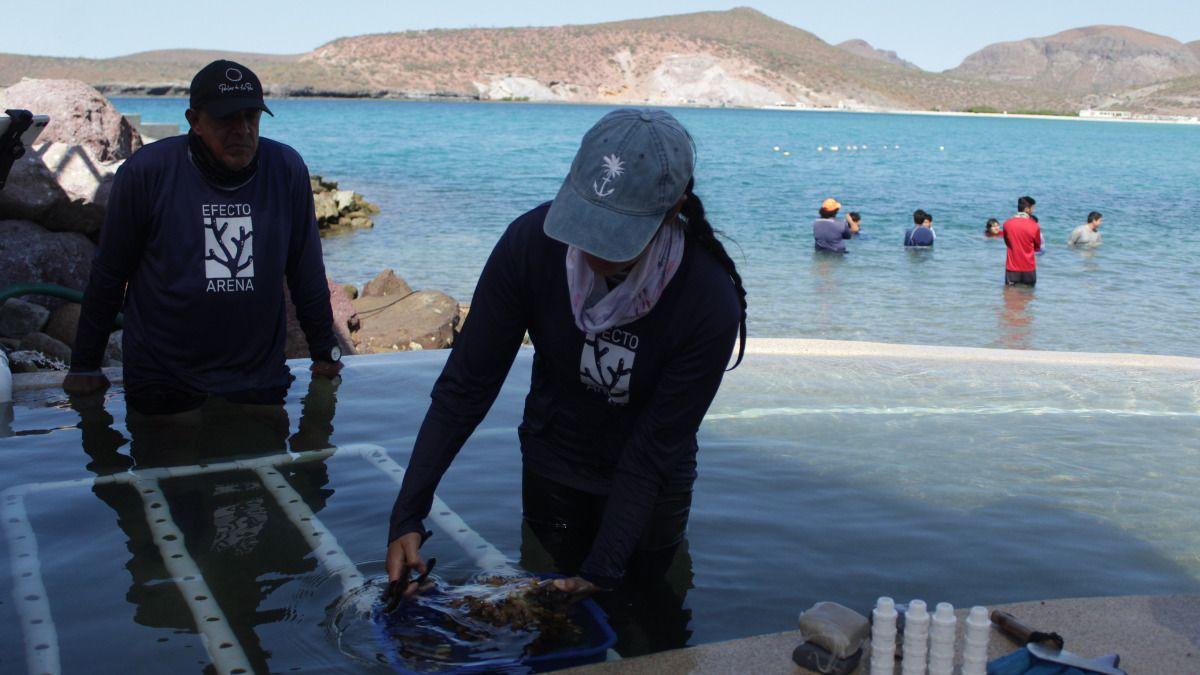In the Perlas area of La Paz, next to Puerto Pichilingue, where the sea opens in turquoise tones and the reef still retains much of its vitality, the organization Efecto Arena trains tourist service providers in direct contact with coral so that visitors learn how to protect reefs.
Carlos Cáceres Martínez, technical advisor and coordinator of the Arena Effect Environmental Education Program, explained that the courses have 20 hours of training recognized by the Ministry of Tourism (Sectur) and are part of the updates required by the Official Mexican Standard to keep the accreditation of service providers in force.
“What interests us in these groups is to share with them what good performance practices are on reefs, not so much that they learn about coral gardening. Here we want them to know, when they take tourists to swim, what they should do to respect and for things to go well,” he said.
The organization is working to train the second generation of trained guides, after a first course with 19 participants from Baja California Sur, Nayarit, Oaxaca and Mexico City.
For Cáceres, this type of training represents a necessary tool for those who, although aware of the importance of coral, require technical knowledge to work on activities with tourists.
“The locals are all aware that they have to take care of the coral, but they need training to be able to have tools and work with the groups properly,” he explained.

Arena effect
The initiative emerged as part of the educational scheme developed for six years by Efecto Arena, an organization founded by Carlos Cáceres, and Leopoldo López in the face of the visible deterioration of the reefs near La Paz.
“Six years ago we turned to see each other and said: 'we have to do something, things are bad'. We decided to form Efecto Arena in order to be able to help things change,” he said.
The project was born under the ecosystem of the Innovaciones Alumbra collective. Its base of operations is located in Perlas de La Paz, within a maritime-territorial concession of 3,700 square meters. There, next to a reef that remains in good condition due to its low attendance, the team carries out coral restoration activities and awareness-raising workshops for children, adolescents and, recently, adults linked to tourism.
These actions are becoming important in a context of growing tourism. “There is a very high growth rate of visitors to nature watching. As providers are well prepared, we will be able to carry out the activity in a friendly manner and maintain the resilience of the spaces they visit. If not, they will deteriorate and lose their importance,” he warned.
The work of Arena Effect is not limited to education. Its technical team maintains 12 authorized restoration areas, located within a radius of 10 kilometers from San Juan de Nepomuceno, where they currently operate. Each coral that is planted costs approximately 450 pesos, and up to now 22,000 fragments have been processed.
The organization uses photogrammetry tools to measure the growth and evolution of corals based on digital models made with hundreds of photographs. “With these models, we study change, the process of change. We have the model from three months ago, nine months ago, twelve months ago, and with each one we study the complexity of the reef,” Cáceres explained.
Technical monitoring results in results where survival rates vary depending on the depth and level of disturbance. On the islet of San Rafaelito, for example, transplanted corals achieve between 65% and 85% survival, while on the islet of San Juan de Nepomuceno, where there are no visitors, the percentages are “extraordinary”, between 85% and 93%. These data support the idea that responsible management of tourist areas has a direct impact on reef health.
In addition to visual monitoring, Efecto Arena works with 100 genetically identified morphs to evaluate the resistance of different coral variants to rising water temperatures.
In collaboration with researchers from the Northwest Biological Research Center (CIBNOR), they have launched a gene bank that will serve to select the most resistant organisms and replicate their spread. The organization is part of the Pacific Restoration Network with the objective of sharing techniques and experiences in the face of the effects of climate change.
For Cáceres, the educational component remains the axis that gives meaning to the project. From children's coral gardening workshops to certified courses for guides, the idea is to create an informed and responsible community around the reef. “The more diverse and connected reefs are, the more resilient they are to climate change.”



Comentarios (0)